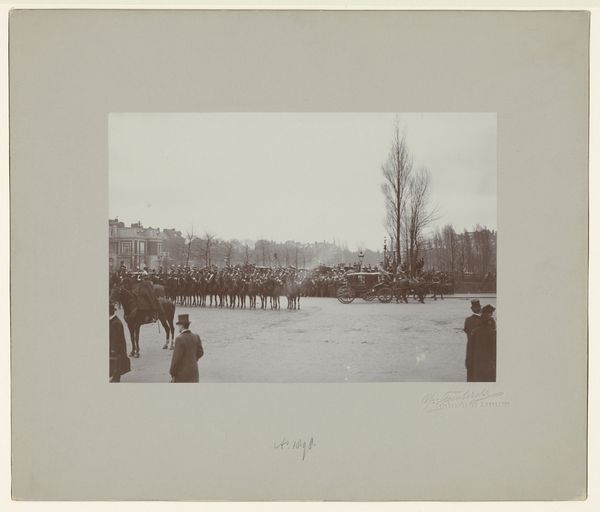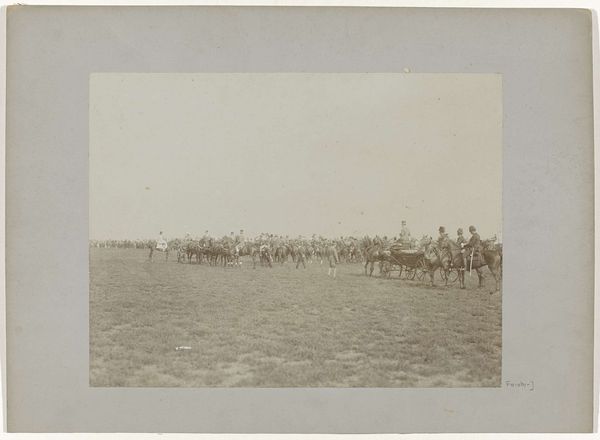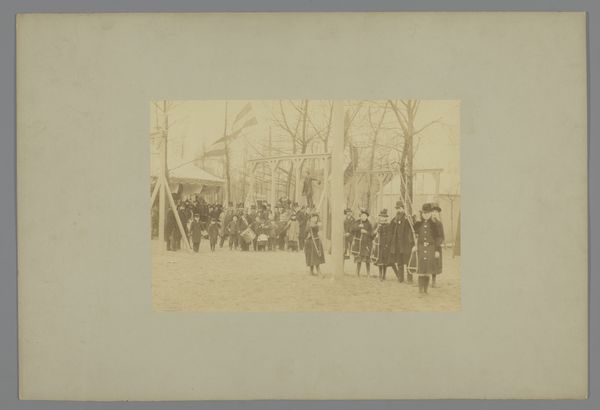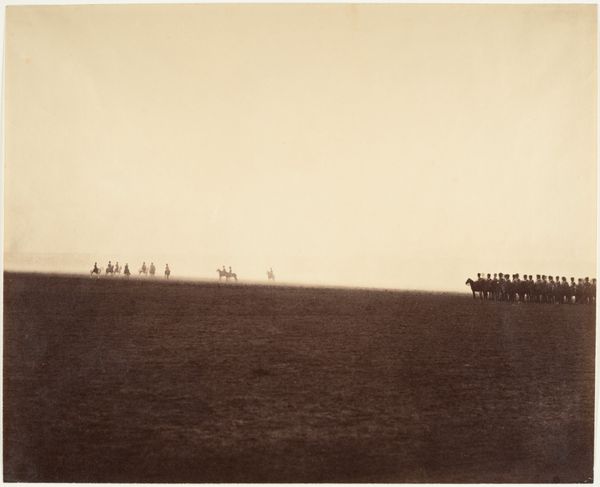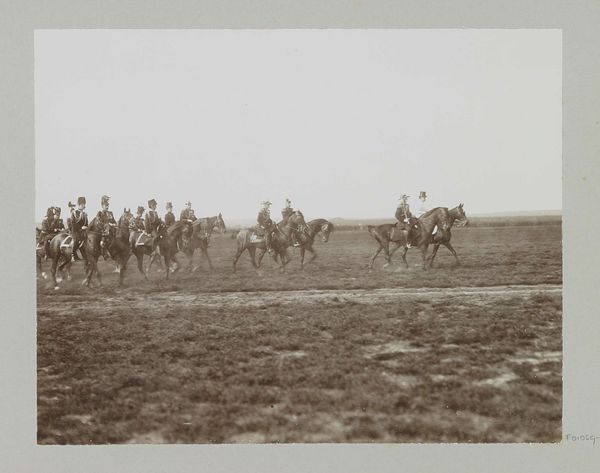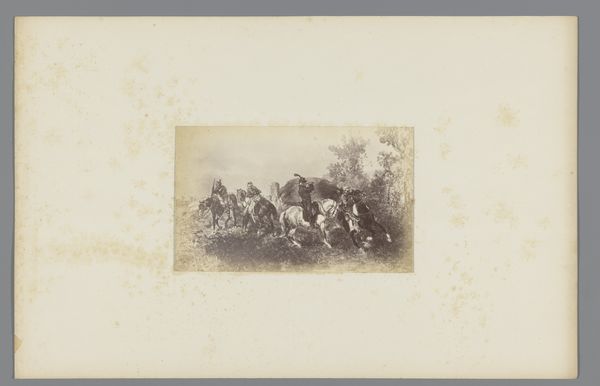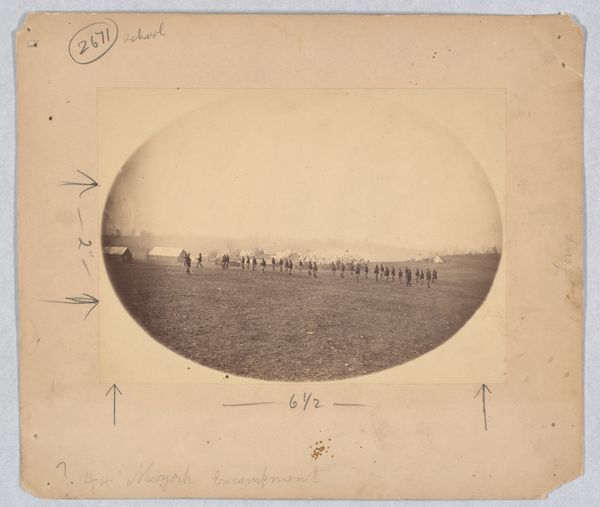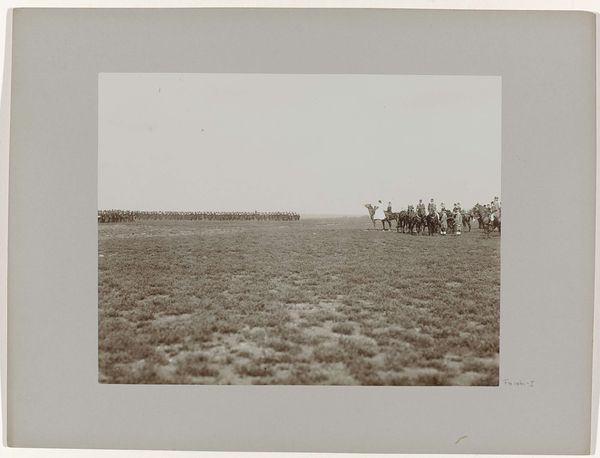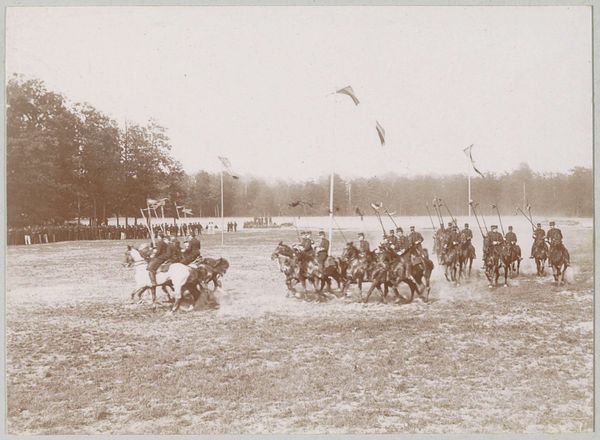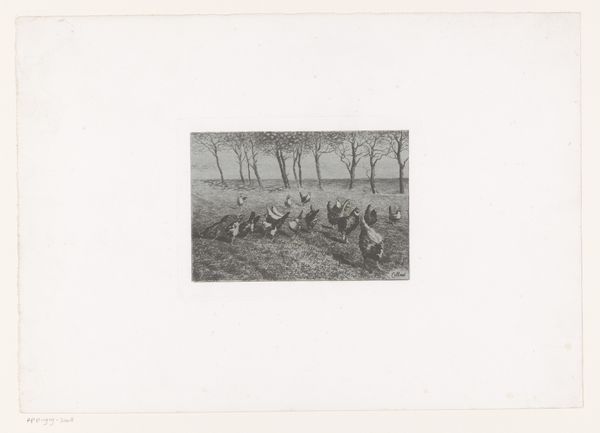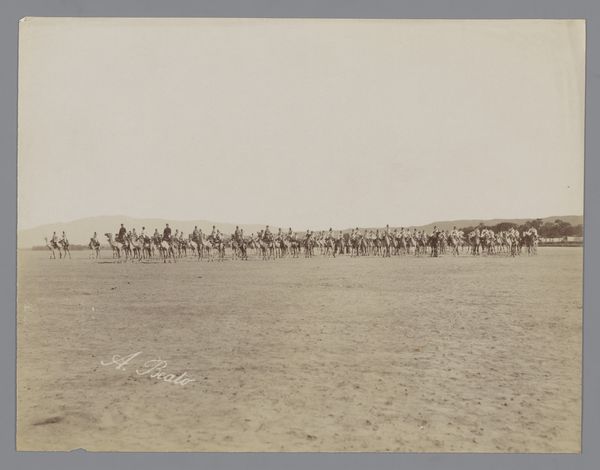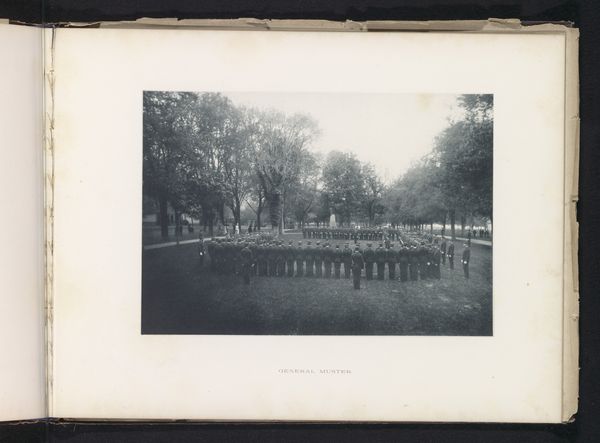
Ere-escorte van Amsterdamse burgers bij de inhuldiging van koningin Wilhelmina 1898
0:00
0:00
Dimensions: height 135 mm, width 203 mm, height 260 mm, width 307 mm
Copyright: Rijks Museum: Open Domain
Editor: So, this gelatin-silver print by Albert Greiner is titled "Ere-escorte van Amsterdamse burgers bij de inhuldiging van koningin Wilhelmina," made in 1898. It feels so formal, almost stilted, like everyone's holding their breath. What strikes you most when you look at it? Curator: The sea of dark horses and riders, the subdued tonality, it all evokes a certain…weight. It’s more than just a record of a parade, isn’t it? Consider the psychological weight of a new monarch assuming power. Notice how the verticality of the bare tree emphasizes the scene's solemnity. Doesn't it resemble a silent witness? Editor: I see what you mean. The tree *does* seem like a figure observing the event. How much of this somber feeling would you say is intentional, versus just the limitations of photography at the time? Curator: That’s the crux of it, isn't it? Photography in this era *inherently* carried a certain gravity, didn't it? But consider what Greiner chose to frame. He wasn’t simply documenting; he was crafting a symbolic image. Think about the collective memory he’s capturing: monarchy, duty, and the dawn of a new era. Are we meant to feel celebratory, or to contemplate the heavy responsibility Queen Wilhelmina is inheriting? Editor: That's a really good point – the image isn't overtly celebratory. It's more…reflective. Curator: Precisely. Look how the light falls, almost funereally. The cultural memory is steeped in respect, duty and even possibly apprehension for what lies ahead for both the new Queen and the Netherlands as a whole. What do you make of the subdued crowd in the background? Are they celebrating or observing? Editor: Good point – that is subtle, but also adds to the somber effect of the whole scene. I was so focused on the horses at the front. Curator: These layered symbols can teach us more than simple historic context. It is really about the power of an image, and visual rhetoric of continuity and duty. Editor: I never thought about how a photograph from so long ago could hold so many symbolic layers! Curator: Indeed, looking at how cultural memory gets created via symbols offers rich interpretations of what photographs can represent to audiences across different periods.
Comments
No comments
Be the first to comment and join the conversation on the ultimate creative platform.

